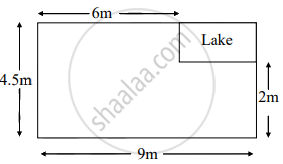Advertisements
Advertisements
Question
Let A be an event. For event A, which probability cannot be possible?
Options
`2/3`
1
`3/2`
0
Solution
`bb(3/2)`
Explanation:
We all know that the chance of any event cannot be greater than one.
Thus, `3/2` cannot be the probability of an event A.
APPEARS IN
RELATED QUESTIONS
A bag contains 3 red, 3 white, 3 green, and 3 black balls. One ball is picked up from the bag at random. What is the probability that the ball drawn is:
a. white
b. not white.
What is the probability of the event that a number chosen from 1 to 50 is a prime number?
A box contains 5 strawberry chocolates, 6 coffee chocolates and 2 peppermint chocolates. If one of the chocolates is picked from the box at random, find the probability of the following events by completing the activity.
Activity : Let ‘S’ is the sample space.
∴ n(S) = 5 + 6 + 2 = 13
Event B: it is a peppermint chocolate.
∴ n(B) = `square`
∴ P(B) = `square/("n"("S"))` .......[Formula]
P(B) = `square/13`
If three coins are tossed simultaneously, find the probability of the following events.
Event B: To get at least two heads.
If One coin and one die are thrown simultaneously, find the probability of the following events.
Event B: To get head and an odd number
What is the probability that a leap year has 53 Sundays?
A missing helicopter is reported to have crashed somewhere in the rectangular region shown in the figure. What is the probability that it crashed inside the lake shown in the figure?
In the adjoining figure, the arrow rests on any number, after the rotation of the disc. The probability that it will rest on any of the numbers on the disc is equal. Let A be any random event. To find the probability of A, fill in the boxes.

(1) S = `square`
(2) n(S) = `square`
(3) Let A be the event that arrow points at the number which is perfect cube.
A = `square`
∴ n(A) = `square`
(4) ∴ P(A) = `(n(A))/(n(S)) = square/square = square`
Using the digits 0, 2, 3, 5 the two-digit numbers are constructed without repetition of digits. Find the probability of the following events:
Condition for event A: The number formed is even.
A handbag contained fifty ten rupees note, thirty-five fifty rupees note and fifteen hundred rupees note. One note is drawn from a handbag. What is the probability of getting:
Hundred rupees note
The probability that a relation R from {x, y} to {x, y} is both symmetric and transitive, is equal to ______.
A man has 3 pairs of white socks and 2 pairs of blue socks kept together in a bag. If he dressed up hurriedly in the dark, the probability that after he has put on a white sock, he will then put on another white sock is `M/n` (`M/n` is in simplest form) then n – M = ______.
A coin is tossed twice and the four possible outcomes are assumed to be equally likely. If A is the event, 'both head and tail have appeared' and B the event,' at most one tail is observed,' then the value of P(B/A) is ______.
If six students, including two particular students A and B, stand in a row, then the probability that A and B are separated with one student in between them is ______.
From a group of 10 men and 5 women, four member committees are to be formed each of which must contain at least one woman. Then the probability for these committees to have more women than men is ______.
A card is drawn from well shuffled pack of 52 playing cards. Find the probability that the card drawn is a face card.
One coin and a die are thrown simultaneously. Find the probability of the following event:
Event A: To get a head and a prime number.
